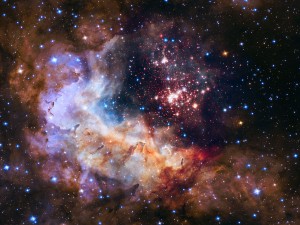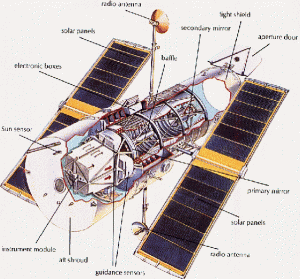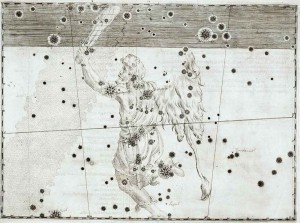What do stars look like? My first reaction is that star is star-shaped, a shape has five points. It is probably a mathematic question. Because we can draw a continues line into a five-pointed star, which is very convenient and efficient. But actually stars are big balls of gas, giving off heat and light. Therefore, most of stars is not star-shaped, but spherical.
So why we always draw stars with points? The answer is a little surprising that we see stars as pointy. What’s more, the images captured by telescope show that star is pointy. This is the image of the cluster Westerlund 2 from NASA/ESA Hubble Space Telescope. It is not because the stars have points. Actually, the accuracy of pictures could be affected by several optical phenomena since pictures just record object’s images in several different mediums by some apparatus.

This NASA/ESA Hubble Space Telescope image of the cluster Westerlund 2 and its surroundings has been released to celebrate Hubble’s 25th year in orbit and a quarter of a century of new discoveries, stunning images and outstanding science. The image’s central region, containing the star cluster, blends visible-light data taken by the Advanced Camera for Surveys and near-infrared exposures taken by the Wide Field Camera 3. The surrounding region is composed of visible-light observations taken by the Advanced Camera for Surveys.
As we know, light is a wave. When a wave encounters an obstacle or a slit, diffraction occurs. To be specific, when light from a distant source passes through a hole or around an object, its waves are reflected or bent a little and interfere with each other. So the passing light leaves an imprint of the hole or object. When the object is a straight line, it spreads the light out into a perpendicular series of dashes. So if we use camera focusing on a point light when there is an obstacle between light source and photographic plate, the photo would represent that a line, brighter in the center and darker in the two edges, is perpendicular to the point light. When the object is a cross, it creates two perpendicular series of dashes. What’s more, circles can lead to concentric rings and hexagons can cause six-pointed stars. We can find that the photo Hubble Space Telescope taken is very similar to diffraction pattern. Since Hubble Space Telescope has four struts in order to support its small secondary mirror, and their imprint causes the four-pointed stars in its photos.
As a result, we see the pointed stars due to the lack of apparatus. However, before invention of camera and telescope, human draw stars with points according to Uranometria, the short title of a star atlas produced by Johann Bayer in 1603.
The reason is very simple. Because human’s optical structure, our eyes have defect. So to say, our crystalline lenses is camera lens, our iris is aperture, and our retina is imaging device. In detail, our lenses are not very perfect, having subtle structural imperfections called suture lines. Light passes the imprint making those imperfections leave. So when light reaches our retina, it shows that it is star-shaped. Additionally, during the lifetime, the surface patterns of human’s lenses have changed more and more complexly. Consequently, our optical structure would cause diffraction. The researchers of Instituto de Optica Daza de Valdés confirmed this statement. They utilized a set of complex mechanics to record what was happen after the green light reaching a human’s eye left a light spot in the retina. The light spot was exactly star-shaped.
That people used to draw shapes with five or six or more points to represent stars is not the reason that stars are star-shape. Different image of object is due to the interfere of light and imperfections of optical structures. Although scientifically most stars just like our star, sun are spherical, we still look stars with points. “Twinkle, twinkle, little star. How I wonder what you are.” Next time when we look at star, we already know that actually it is scientifically acceptable that we see stars with star-shaped but without spherical.
Source and credits:




